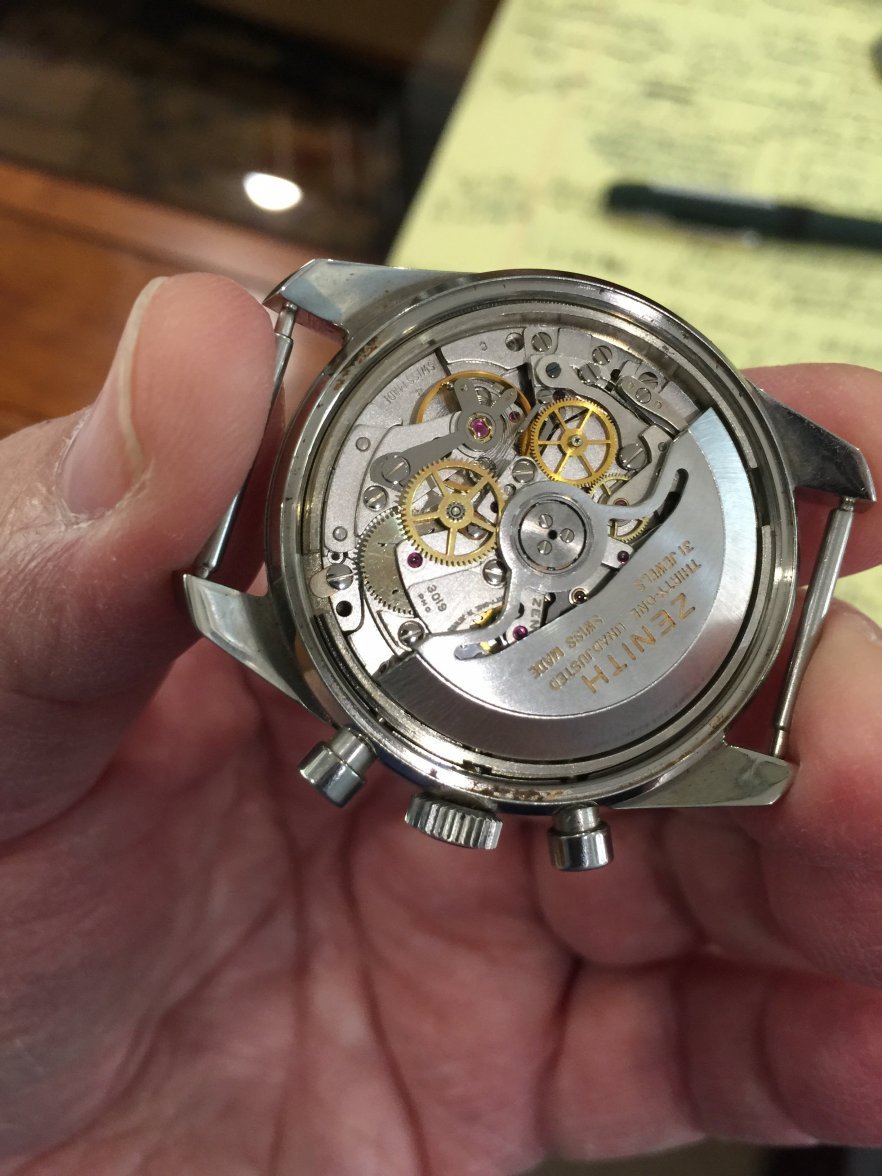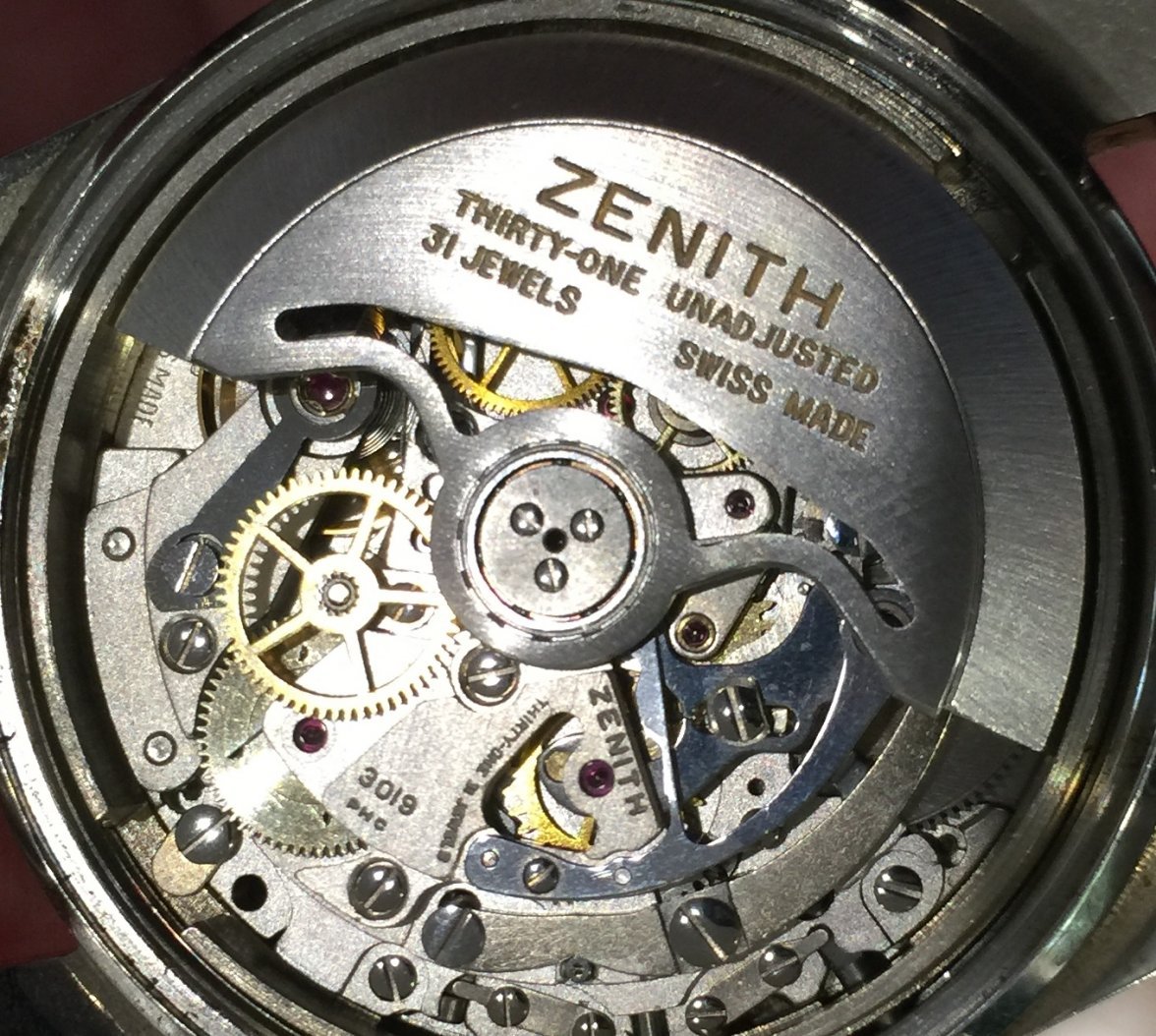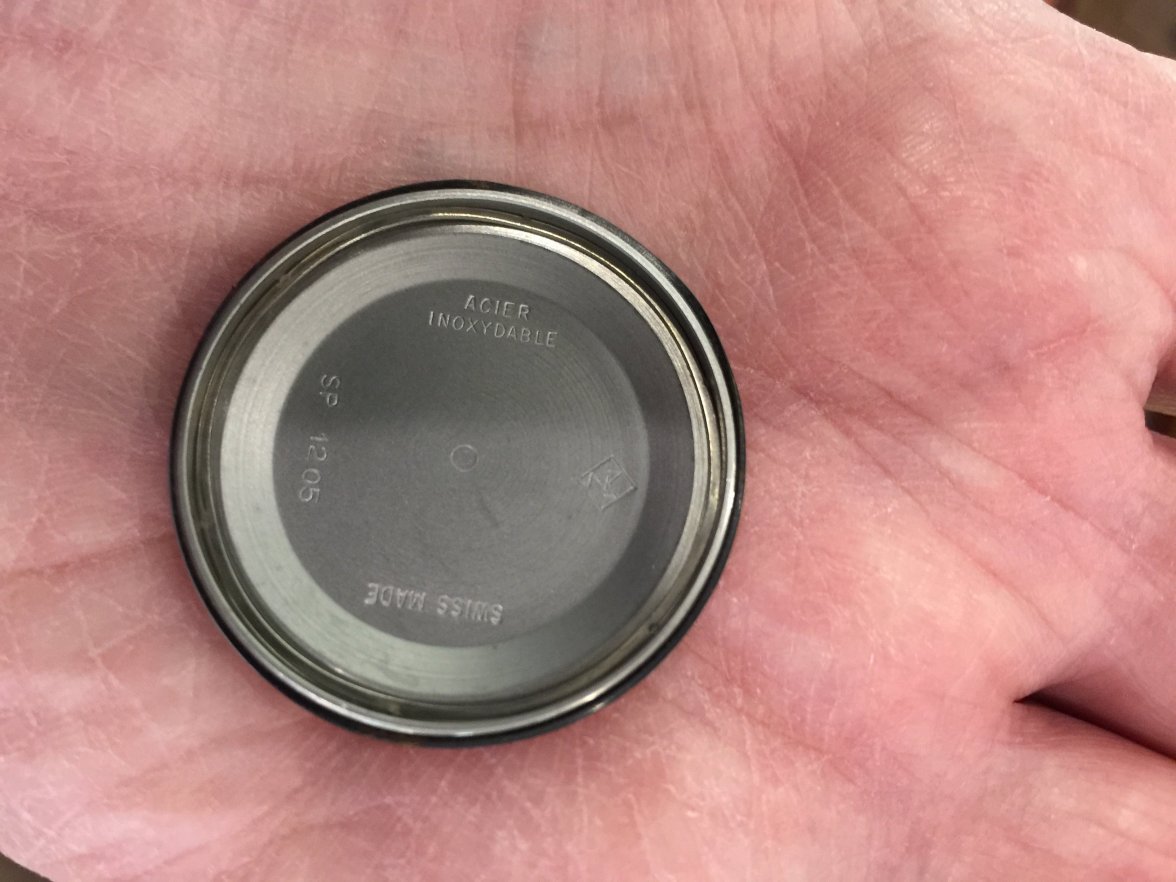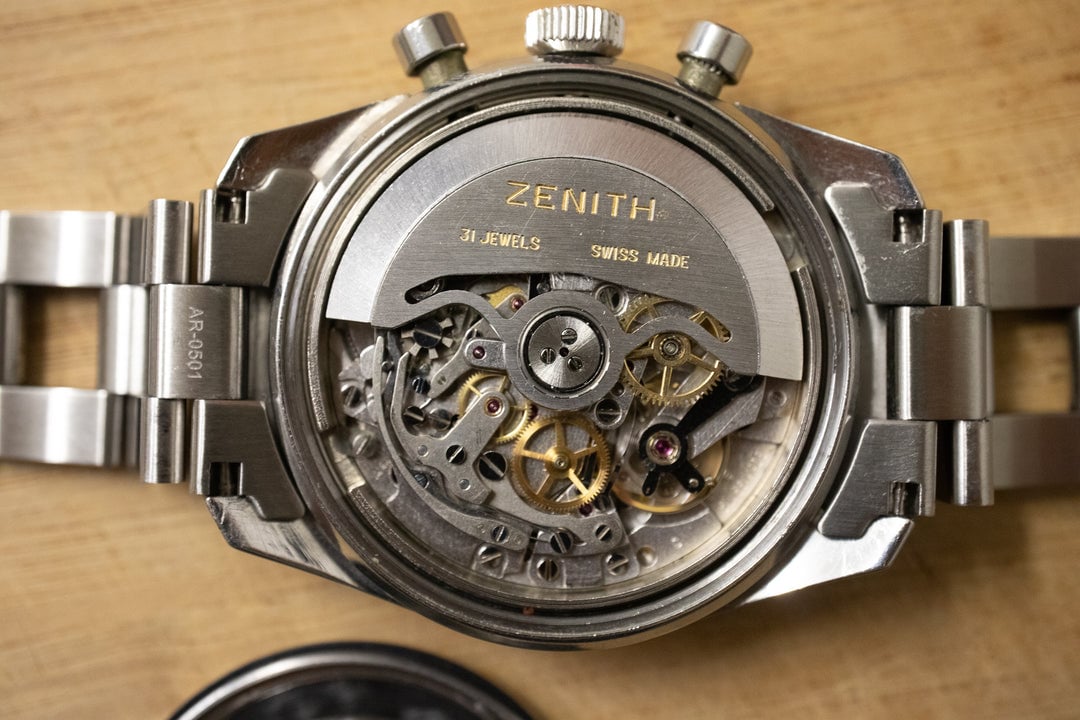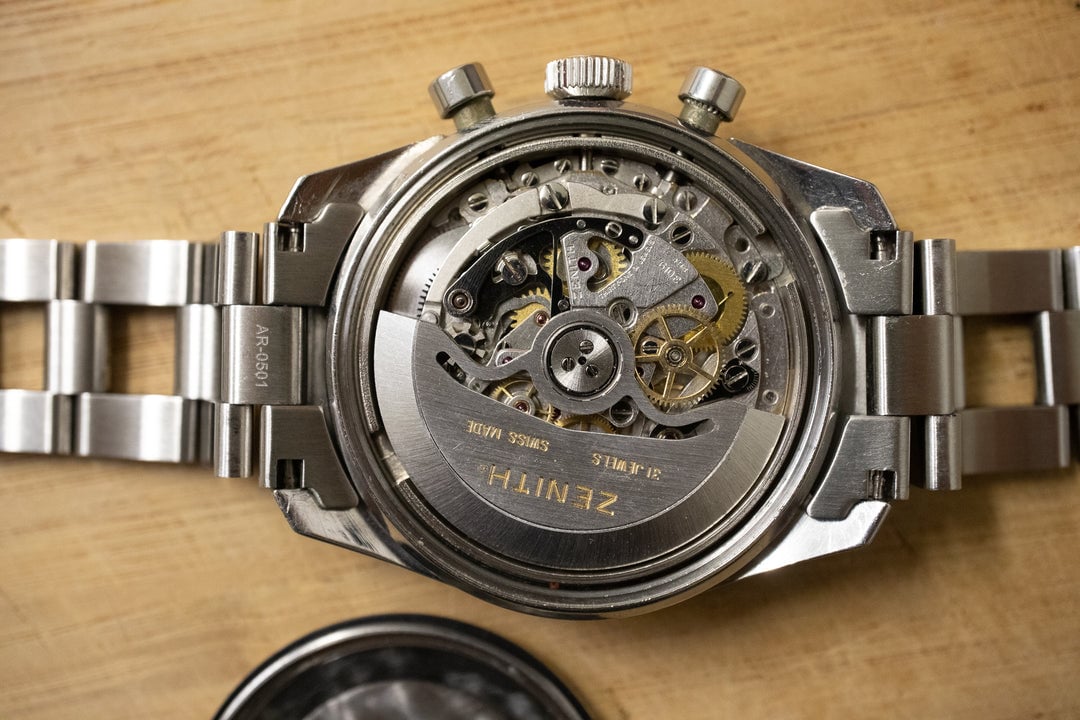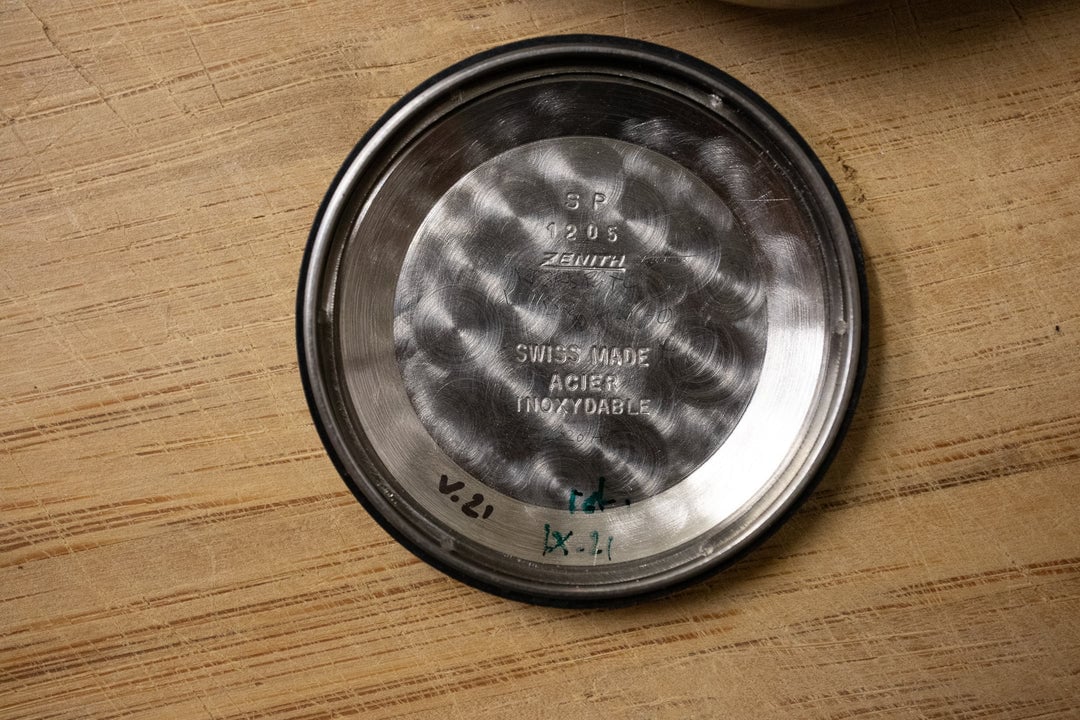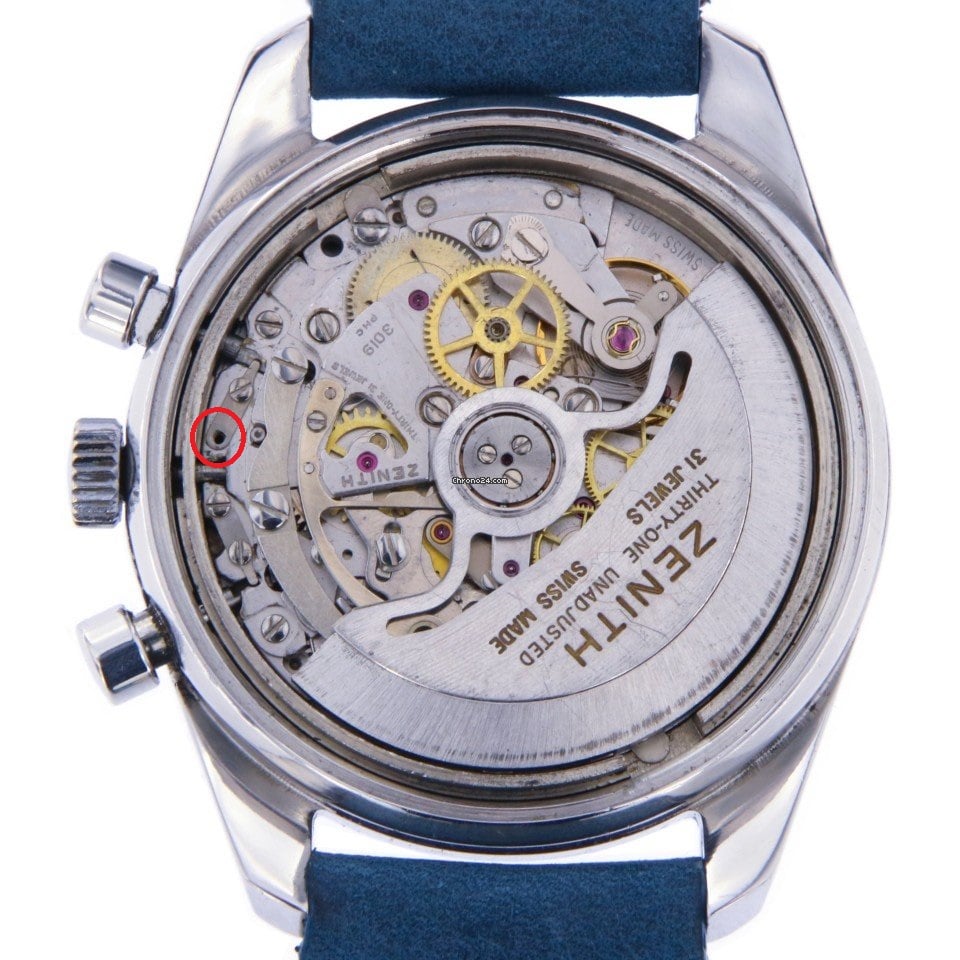Gopher
·A question for all you Zenith experts.
In my search for an A386, I have noticed many have what appear to be noticeable wear markings toward the outside edge of the rotor. See photo below for a typical example A386 (source: Zenith | Vintage "El Primero" Tri Color Dial ref. A386, made... for Price on request for sale from a Trusted Seller on Chrono24)

It also appears on other references with this movement as shown below on this A385 (source: ZENITH EL PRIMERO A385 Vintage automatic chronograph swiss watch Cal. 3019 PHC BROWN DIAL *** COLLECTORS *** Zenith Vintage watches - Watches83):
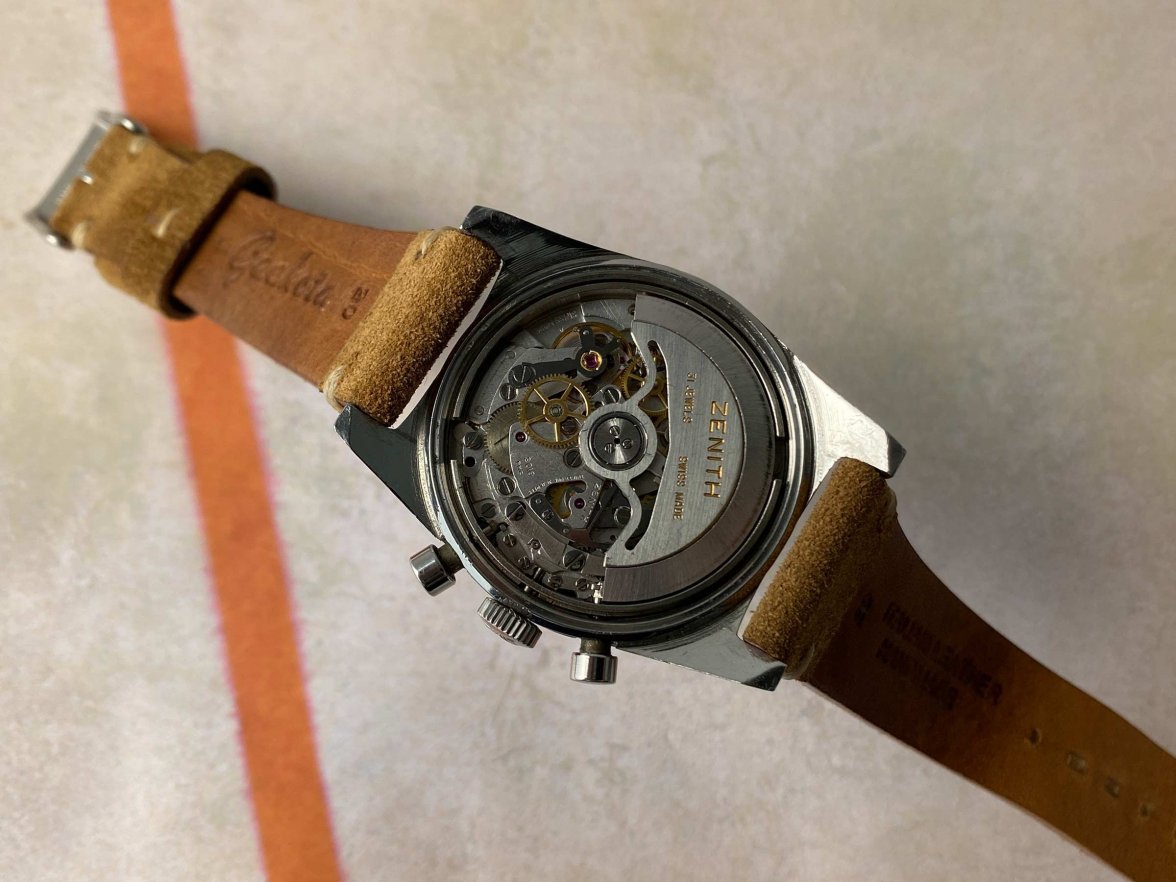
Does anyone know why this is occurring or have any theories on why it seems so common on this caliber? Could it be residue instead of wear?
This is the first movement where I have noticed such widespread rotor markings, so just curious as I learn more about the 3019.
In my search for an A386, I have noticed many have what appear to be noticeable wear markings toward the outside edge of the rotor. See photo below for a typical example A386 (source: Zenith | Vintage "El Primero" Tri Color Dial ref. A386, made... for Price on request for sale from a Trusted Seller on Chrono24)

It also appears on other references with this movement as shown below on this A385 (source: ZENITH EL PRIMERO A385 Vintage automatic chronograph swiss watch Cal. 3019 PHC BROWN DIAL *** COLLECTORS *** Zenith Vintage watches - Watches83):

Does anyone know why this is occurring or have any theories on why it seems so common on this caliber? Could it be residue instead of wear?
This is the first movement where I have noticed such widespread rotor markings, so just curious as I learn more about the 3019.
